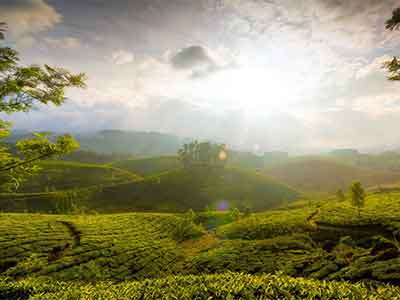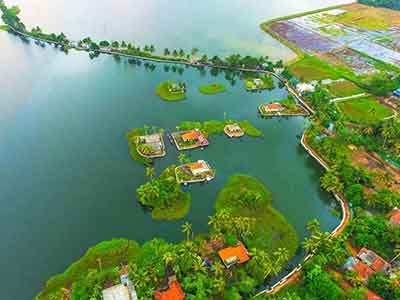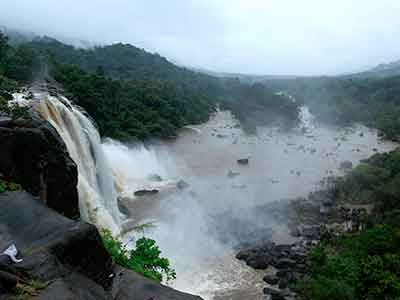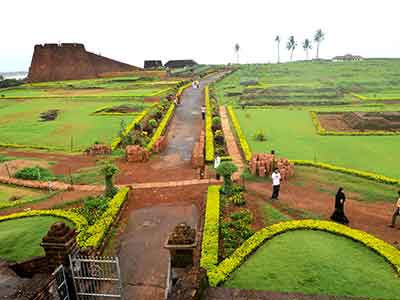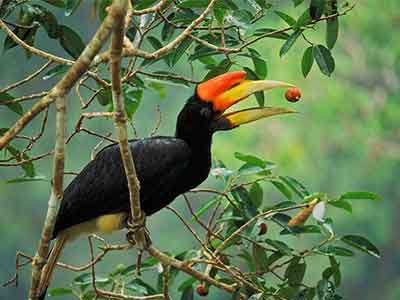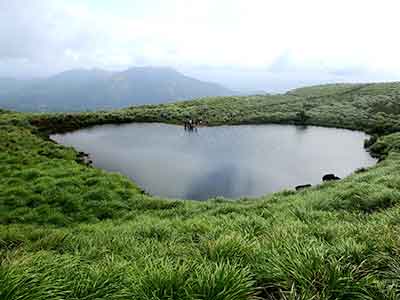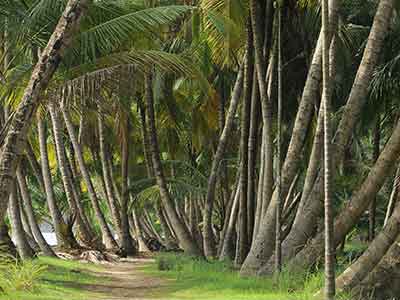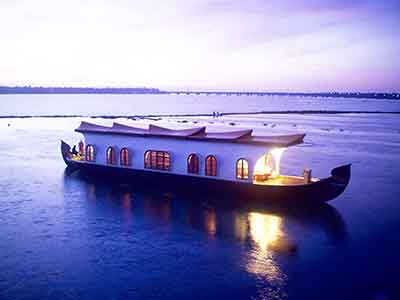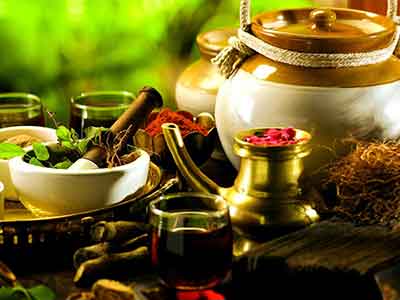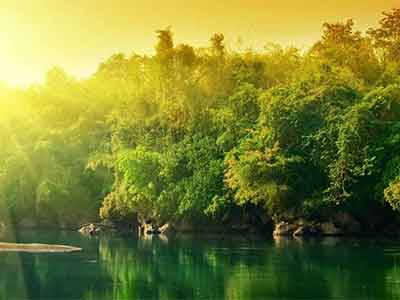Email: sales@travioholidays.in
Help: +91 98950 53303

Documented as a thriving port by both Ptolemy (140 C.E.) and Periplus (1st century C.E.) and 60 kms south of Chennai lies the ancient, historic city of Mammalapuram or Mahabalipuram. The Pallava Dynasty who were maritime traders par excellence, established Mahabalipuram as a favoured port under their control, during the 7th century with historic links between ancient Rome, Greece and India. Relics, such as megalithic burial urns, cairn circles and jars with burials dating to the early Christian era are a treasure trove of discoveries near Mahabalipuram.
One of the mythical pagodas actually stands on the sands of Mahabalipuram. A 7th to 8th century, five-storied temple, cut out of solid rock and carved intricately, the temple provides evidence of the structural abilities of the Pallava engineers. Local fishermen insist that the other six glitter beneath the waves, far out to sea. The coast is scattered casually with unimaginable treasures. Rathas or chariots, which are essentially temples carved like stationary chariots…. mandapas or caves hewn out of rock, which might have been meditation sanctuaries of Buddhist monks…. and with thousands of sculptures and enormous stone reliefs, such as the renowned ‘Descent of the Ganga’. It is no wonder that all these monuments, temples, sculptures and caves have been grouped into a UNESCO World Heritage Site.
Shore Temple
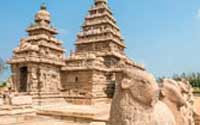
The Shore Temple (built in 700–728 AD) is so named because it overlooks the shore of the Bay of Bengal and is one of the oldest structural (as opposed to rock-cut) stone temples of South India, built with blocks of granite. At the time of its creation, the village was a busy port during the reign of Narasimhavarman II of the Pallava dynasty. As one among the ‘Group of Monuments’ at Mahabalipuram, it has been classified as a UNESCO World Heritage Site since 1984.
Arjuna’s Penance
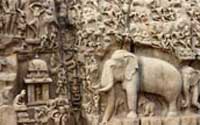
This magnificent relief, carved in the mid-seventh century, measures approximately 100ft in length and about 45ft in height. It is a giant open-air relief carved of two monolithic rock boulders. The legend depicted in the bas-relief sculpture is a narrative drawn from Hindu mythology that depicts the figure of Arjuna in penance and the descent of the River Ganges from her celestial origins to the earth. The sculptures carved in the natural fissure that divides the cliff also illustrates the witnessing of the event by scores of gods, goddesses, mythical figurines, wild and domestic animals – all admiringly looking up at the scene.
It is one of the Group of Monuments at Mahabalipuram that were designated as a UNESCO World Heritage Site
Five Rathas
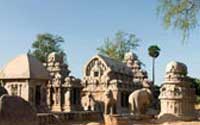
In the grand tradition of the Pallava builders, the five Pancha Rathas or the Pandava Rathas are executed and enfolded within a massive complex in a flourish of unprecedented monolithic rock cut sculpture and architecture. Ambitiously begun in the 7th century by the Pallava monarch, Mahendravarman I, it took the succeeding generation and his son Narasimhavarman to complete his vision. However, since he died before the consecration of the temples could be completed, they never functioned as sacred spaces.
DakshinaChitra
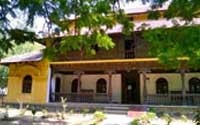
DakshinaChitra, or the Picture of the South, is the dream project of the government of Tamil Nadu in partnership with architects Benny Kuriakose and the visionary Laurie Baker who made India his home. It is a model village of craftspeople and performing artists who create the arts and crafts, organic extensions of their lives within this village – thereby providing a glimpse into the continuity of living art and ancient traditions of the four southern states of India.
The government hopes to involve citizens intimately in the cultural aspects of these states through active participation and interaction with artists and craftspersons onsite. 18 outstanding, traditional homes in four states were rescued from demolition and brought to Dakshinachitra where they were meticulously restored in the original vernacular styles of their separate states. Anyone wishing to research the architectural styles common to villages in the Southern states – or understand their cultural values – would get a fair start in this breathtaking village.
Thirukadalmallai
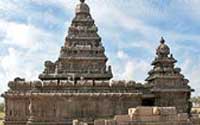
The Sthalasayana Perumal temple in Mahabalipuram is eulogized in the early medieval Tamil canon, Divya Prabandha, by Azhwar saints between the 6th–9th centuries AD. Built by the Pallava dynasty, the structure was further embellished and extended by the Cholas, the Vijayanagar kings and later, by the Madurai Nayaks. It is one of the Mahabalipuram group of monuments which have been listed as UN world heritage sites.
Kancheepuram
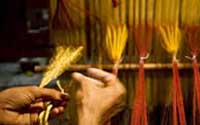
Women delight in the sensuous, heavy, handloom silks and cottons of the ancient temple town of Kanchipuram, where every home seems to be a humming cottage industry. A township that evolved on the banks of the Vegavathy River, Kanchipuram has borne witness to the rise and fall of the fortunes of many dynasties – the Pallavas, Cholas, Pandyas, the Vijayanagar empire, the Carnatic kingdom, and finally, the British empire. While most historians refer to Kanchipuram as a Chola capital, the grammarian Patanjali first mentioned the city during his lifetime (the 3rd or 2nd century BCE) and it was also described as the “best among cities” by the Sanskrit poet Kalidasa
Kanchipuram or Kanchi, is home to one of the four Sankaracharyas – as the southern pillar of the four recognized leaders of Advaita Vedantam. But it is to the goddess Kamakshi Devi, presiding goddess of the city that people throng – and within the precincts of the Kamakshi Amman temple, which is one of the 51 Devi shakti peeths, she is believed to grant the boons of education and wealth generously. In the Hindu theological narrative, Kanchipuram is one of the seven Indian cities of pilgrimage and moksha where people seek salvation in their final journey.
Kailsanathar Temple
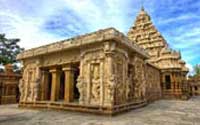
Constructed in a pioneering style of architecture – in what later became recognized as the grand and intricate signature Dravidian style – between 685 and 705 AD by the Pallava dynasty, there exists no documentation of a more antique temple in Kanchipuram. Dedicated to the god Shiva, it might be safe to say that the religious traditions of Shaivism primarily dominated the region, expressed in this first structural temple of South India.
The foundations were laid and the construction overseen by Narasimhavarman II, although it was left to his last son Mahendravarman III to complete the façade and the gopuram. Earlier temples used to be built of wood or cut from rock as evidenced in Mahabalipuram. It was the Kailasanathar temple which challenged tradition and created a structure that became a successful blueprint for other temples in South India.
59 independent little shrines depicting the diverse aspects of Shiva and unique (for the time) frescoes describing his legends, adorn the inner walls of the sanctum. The shrines are enclosed within niches of the outer passage, facing devotees as they circumambulate the sanctum – a feature which became typical of latter day temples, either as sculptures of the presiding deity or painted as wall frescoes.. The inclusion of demi gods, or half animal deities, very popular in early Dravidian nature-centred and perhaps, tribal cultures, are a nod to local belief. Interestingly, the temple was also a safe sanctuary for rulers; a secret tunnel – potentially an escape route during invasions – is on view.
Ekambareshwar Temple
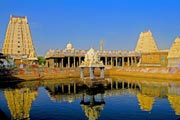
The largest temple in Kanchipuram and one of the five major Shaivite temples in the city, the Ekambareshwar temple is easily spotted in the northern part of Kanchi. The entrance tower or gopuram, possibly among the tallest in the entire country, looms majestically as a reminder that the Chola Kings who demolished and reconstructed the original temple of the Pallavas, conceived and “built like giants and finished like jewelers”. 1008 lingams adorn the inner walls and the 25 acres of land on which the temple stands includes 5 courtyards and a 1000 pillared hall.
A legend associated with this temple revolves around a mango tree that is believed to be around 3,500 years old and which produces four different types of mangoes – perhaps the result of grafting at some point. Believed to be at least 1400 years old, the temple was further expanded during the 10th century by Adi Shankaracharya, under royal patronage.
Varadaraja Perumal
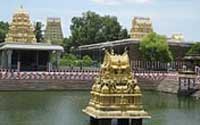
The Vaishnavite Varadharaja Perumal Temple stands in Vishnu Kanchi – or the part of Kanchi ruled by the deity Vishnu, demonstrated by many Vaishnavite temples in the area. It is as imposing with its ‘rajagopuram’ standing at a height of 96 ft. The reclining idol of Vishnu, about 40 feet in length, is made of wood from a fig tree (Athi), believed to be a sacred wood in Hindu mythology. The temple is one of the 108 Divya Desams or Vishnu temples visited by the 12 Tamil Alwar poet-saints and Ramanuja, a revered saint in the Vaishnava Advaita tradition, once lived and meditated here.
Rebuilt and renovated periodically by Pallava and Vijayanagar kings, the temple is believed to be more than 2000 years old. Once every 40 years, the original idol of Varadaraja Perumal is taken from the waters of the tank where it lies ever since it was damaged by Muslims during an invasion – and devotees are granted the blessings of the god for 10 days.
Kamakshi Amman Temple
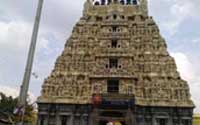
Locals believe that the temple was constructed 2000-3000 years ago. Modern historians peg the construction to the 6th century C.E., built by the Pallava dynasty, to honour the goddess Parvathi. Kanchipuram was the Pallava capital at that time.
The idol is beautiful, with the richly clad and jeweled goddess seated in the padmasana or lotus yogic position, holding the symbols of prosperity – sugarcane and flowers, attended by a parrot – in two hands of her four hands. The other two hands hold sterner symbols that remind her devotees to control their undisciplined senses and irrational thoughts.
Visitors are well advised to visit during the annual festival in spring – from the middle of March to the middle of April, when it is possible to enjoy the Ther or chariot festival and the festive float or Theppam.
Thiruparuthikundram
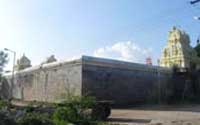
Just as there is a Shiva Kanchi and a Vishnu Kanchi, there exists a Jaina Kanchi in the extended or greater city of Kanchipuram – where two exquisite Jain temples stand gloriously in the village of Thiruparuthikundram, on the picturesque banks of the river Palar.
One temple was built to worship Lord Mahaveer in the 9th century. The other is a 14th century Jeenaswamy Trilokyanathar temple built in 1387. A Sangeetha Mandapam, or auditorium for musical concerts, was also built in 1387. The 17th century saw beautiful paintings, executed here in the delicate Jain style. The presence of these temples indicates the inclusive nature of the predominantly Hindu Vedic town of Kanchipuram and the generally secular philosophy and governance of its rulers.
This most important sect of mystics or saints in Tamil Nadu belong to the Shaivite tradition and are known as the Siddhar or the Cittar, which might be derivatives of the Sanskrit word Siddha.
KanchiKudil
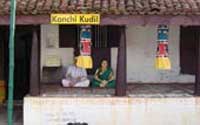
Kanchi Kudil is essentially a heritage home adhering to all the principles of vaastu, the science of Vedic architecture that takes into account all the coordinates that ensure a home full of light, air and space. The house is over a century old and furnished with antique furnishings and the owner’s personal collections of handicrafts, lamps and books.
The roof, in the architecture of the region, is built with Manglorean tiles and there are rocking chairs and flat, wide wooden swings in the verandah, hung with brass chains – a typical feature in the houses of the region – where families congregate in the cool evenings. Life sized replicas of the city’s famous residents stand at the threshold of the home and withal, beckons an open courtyard, resonating with the sounds of classical Carnatic music. A food court provides delicious South Indian cuisine. Visitors may visit the gift shop to pick up mementos of their journey within this timeless city….transported back into gentler and more gracious times of the Kanchi household of yore.
Our Top Tour Packages in South India
The four states that constitute South India are composed of distinctive geographic regions - narrow plains that fringe peninsular South India beside the Arabian Sea and the Bay of Bengal with two mountain ranges running alongside and the rocky hardtop of the Deccan and fertile central plains.
